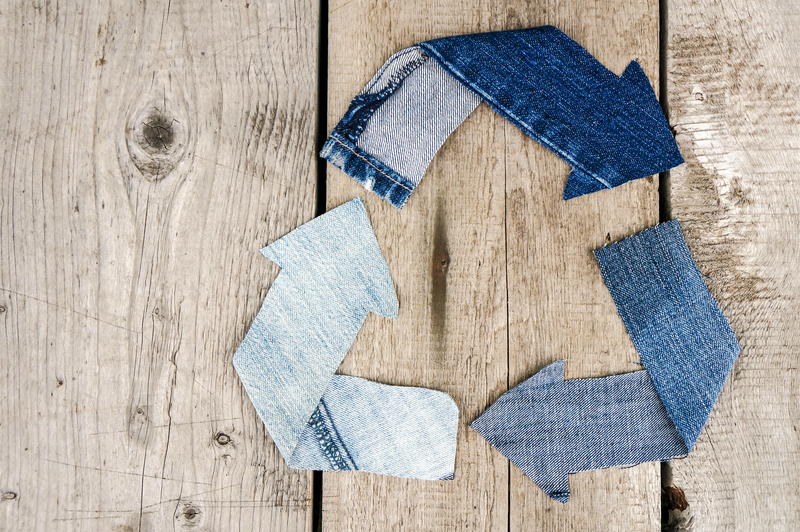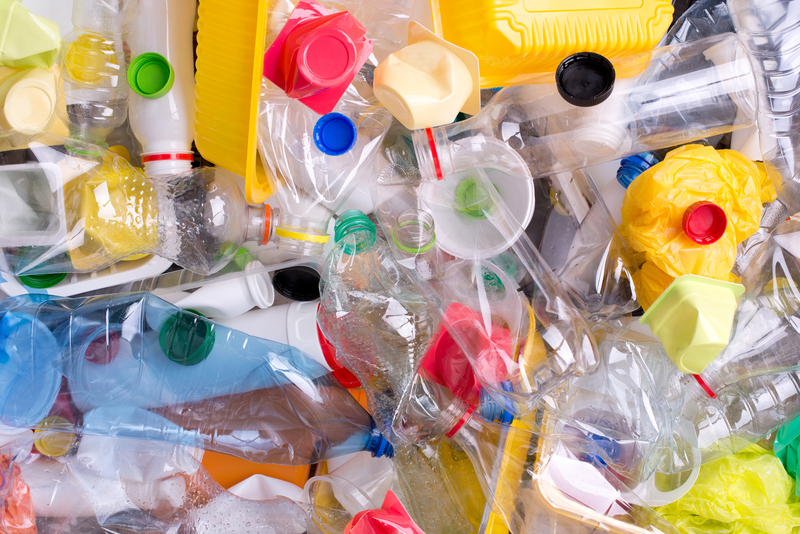Here's Where You Can Drop Off Your Old Chargers Sustainably
Every year, millions of outdated phone chargers, laptop adapters, and other electronic accessories find their way into landfills, often leaching harmful substances into the environment. If you have a drawer full of old chargers, cables, and power adapters, it's time to consider doing your part for the planet by dropping them off at a sustainable collection point. But where should you go? In this comprehensive guide, you'll learn exactly where to drop off old chargers responsibly, why it matters, and how to ensure your e-waste is properly recycled.
Why It's Important to Recycle Old Chargers Sustainably
We live in a time where electronic devices become obsolete at a rapid pace. Chargers and adapters, though small, contribute significantly to the mounting e-waste problem. Over time, their production and improper disposal have a major environmental impact:
- Heavy Metals: Chargers often contain metals like copper, lead, and sometimes even small amounts of mercury -- all hazardous if they leach into soil and groundwater.
- Non-Biodegradable Plastics: The casing and insulation of most chargers are made of plastics that take hundreds of years to decompose.
- Electronic Waste Is Growing: The Global E-waste Monitor estimates that e-waste reached over 53 million metric tons in 2019 and is projected to keep rising.
That's why dropping off your old chargers at a sustainable location is so vital. But what are your actual options? Let's explore.

Top Places to Drop Off Old Chargers Sustainably
1. Retailer Takeback Programs
Major electronics retailers understand the environmental impact of e-waste and often provide takeback programs specifically designed for cables and chargers. Here's where you can go:
- Best Buy: One of the most accessible places for sustainable charger disposal. Most Best Buy locations in the U.S. have bins at the entrance where you can drop off your unwanted chargers, cables, and small electronics for free.
- Staples: Staples offers a comprehensive technology recycling program. Chargers, USB cables, and other tech accessories are generally accepted at the customer service desk.
- Apple Stores: Many Apple Store locations accept used chargers, batteries, and cables regardless of the brand. Find a store near you and ask about their in-store recycling bins.
- Target: Some Target locations have dedicated recycling kiosks near the entrances, where you can safely discard old phone chargers and small electronic accessories.
*TIP: Always call your local store first to confirm what's accepted as programs can vary by region.*
2. Manufacturer Mail-Back Programs
Many electronics manufacturers now take responsibility for the end-of-life recycling of their products. Here's how you can recycle your old chargers directly through the manufacturer:
- Apple's Recycling Program: Mail any Apple or third-party chargers and cables to Apple for free using their recycling mail-in kit. Visit the Apple Recycling program for instructions.
- Sony, Dell, Samsung: Several leading tech companies participate in official e-waste takeback and mail-in initiatives. Check their websites for mail-back instructions specific to chargers and accessories.
Mail-back programs are especially convenient if you can't access a physical drop-off location.
3. Local E-Waste Collection Events
Communities and cities often organize periodic e-waste recycling events, providing residents a chance to sustainably dispose of old chargers and other electronics. Here's how to find them:
- Check City Websites: Local government or waste management websites usually list upcoming e-waste events and accepted items.
- County or Municipal Solid Waste Facilities: Some operate year-round drop-off sites for e-waste, including chargers and small accessories.
- Earth911 or Call2Recycle: Use online directories like Earth911 to search for "charger recycling near me" by zip code.
*Pro-Tip: These events are often free or low-cost and are open to all residents.*
4. Nonprofit and Charity Organizations
Did you know that many nonprofits will accept working chargers for reuse or recycling? This helps the environment and supports people in need.
- Goodwill, Salvation Army, Habitat for Humanity: Many locations take chargers, cables, and small electronics in good, working condition. These are resold or donated to those in need.
- Cell Phones for Soldiers, Eco-Cell: Organizations that collect electronics for charity often accept chargers as part of their sustainable disposal strategy.
*Important: Always confirm what items your local nonprofit accepts before dropping off anything.*
5. City or County Household Hazardous Waste (HHW) Centers
Household Hazardous Waste Facilities not only handle chemicals and batteries but also collect small electronics and accessories, including chargers. Here's what to do:
- Locate your nearest HHW facility via the city or county waste website.
- Check accepted materials and drop-off hours.
- Follow their specific guidelines for preparing your old charger for recycling.
How to Prepare Your Old Chargers for Drop-Off
Before you drop off old phone chargers or any other charging accessories at sustainable collection sites, follow these simple steps:
- Untangle and Bundle: Use rubber bands or twist ties to bundle similar cords together.
- Remove Non-Electronic Parts: Remove any paper, clips, or packaging that isn't electronic.
- Wipe and Inspect: Clean off dust and debris. If the charger is still in working condition, label it for potential reuse.
*Following these steps helps streamline the sorting process at recycling facilities and maximizes the chance for reuse or responsible recycling.*
What Happens to Your Old Chargers After Drop-Off?
Dropping your chargers at a sustainable recycling location is only the first step. Here's what typically happens next:
- Sorting: Collected chargers are sorted by type and material (e.g., cables, adapters, connectors).
- Testing for Reuse: If possible, working chargers are cleaned and prepared for reuse via resale or donation.
- Dismantling and Material Recovery: Non-reusable chargers are dismantled; plastics, metals, and electronic components are separated and processed.
- Safe Disposal: Any remaining hazardous materials or non-recyclable parts are disposed of using environmentally sound methods.
The true benefit? Recycling chargers ensures that valuable metals are recovered for new electronics, toxic substances stay out of ecosystems, and plastic waste is minimized.
Common Mistakes to Avoid When Disposing of Old Chargers
- Throwing Chargers in Household Trash: This is illegal in many places due to hazardous components and always environmentally harmful.
- Throwing Chargers in the Blue (Curbside) Recycling Bin: Most curbside recycling programs don't accept electronics and can be damaged by cords and cables.
- Ignoring Data Security: Some "smart" chargers or docks may contain memory chips. Wipe or reset if needed before disposal.
Other Ways to Ensure Sustainable Disposal of Chargers
While dropping off old power chargers at designated sites is the best practice, here are additional ways to make your efforts even more sustainable:
- Repair Before You Replace: If your old charger still works but the cable is frayed, consider replacing only the damaged part or using a cable protector.
- Donate Working Chargers: Schools, shelters, nonprofit tech programs, and second-hand stores often accept gently-used chargers.
- Participate in Community Swap Events: Some communities host "tech swap" or "reuse" days, encouraging local reuse of all kinds of electronics.
- Upcycling Projects: Creative upcycling can give a second life to old cables (e.g., for art, jewelry, or crafts).
Reducing Charger Waste Moving Forward
In recent years, technology companies are moving toward universal charging standards (like USB-C), which can help reduce the volume of charger waste in the future. Whenever you upgrade, try to use the same charger for multiple devices to slow e-waste growth.

Frequently Asked Questions About Sustainable Charger Disposal
Q: Can I put old chargers in the recycling bin at home?
No. Most home recycling bins are not equipped for electronics, and cables can jam machinery. Always use a dedicated e-waste recycling drop-off location.
Q: Are chargers considered hazardous waste?
While not as hazardous as some electronics, chargers contain metals and plastics that can pose risks to the environment if not properly handled. Treat them as e-waste.
Q: Do I have to pay to recycle old chargers?
In most cases, no. Retailers and many community events accept small e-waste at no cost. Some programs may charge for larger items or bulk drop-offs, so check in advance.
Q: Can I mail my chargers for recycling?
Yes! Many manufacturers and recycling programs accept mail-in e-waste. Just visit the appropriate program's website to request a mail-in kit or mailing instructions.
Summary: The Best Ways to Drop Off Old Chargers Sustainably
- Retail Store Drop-Offs: Use Best Buy, Staples, Apple, or Target recycling bins for easy, convenient sustainable charger recycling.
- Manufacturer Mail-Back: Return old chargers directly to the manufacturer for responsible recycling.
- Community E-Waste Events: Take advantage of local city or county e-waste collection days.
- Nonprofit Donations: Keep working chargers in use by donating to local charities or tech reuse programs.
- Hazardous Waste Centers: Use municipal drop-off locations for truly safe, sustainable disposal.
By following these steps, you'll ensure your old chargers are dropped off sustainably and responsibly. Not only will you help minimize environmental harm, but you'll also contribute to a cleaner, greener planet for the next generation.
Ready to clear out that tangled charger collection? Use the tips above to locate the nearest sustainable charger drop-off location and recycle right today!